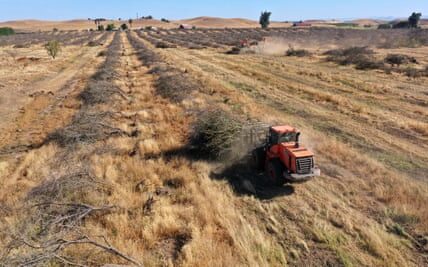Archaeologists have discovered the most alarming instance of Roman slavery ever found at Pompeii.
A bakery was found in the ruins of Pompeii where enslaved individuals were held captive and mistreated in order to make bread. This has been deemed as the most appalling case of slavery in the ancient Roman city.
The compact bakery, with its narrow windows secured by iron bars, was discovered within a household structure in the Regio IX district of the Pompeii archaeological site in southern Italy.
This finding offers additional proof of the daily experiences of enslaved individuals in Pompeii. They are often overlooked in historical records, yet they comprised the majority of the population and their labor was crucial to the city’s economy and the development of Roman civilization.
The residence was supposedly being renovated when it was demolished by the eruption of Mount Vesuvius in AD79. However, the bodies of three individuals were discovered in one of the bakery’s chambers in recent times, suggesting that the house was still inhabited.

Symbols were discovered on the floor of the bakery, likely used to direct the movements of both enslaved workers and blindfolded animals. The home was split into two sections: a luxurious residential area decorated with beautiful frescoes, and a separate bakery where enslaved individuals were compelled to grind grains for bread production. The bakery was isolated from the rest of the world, with the sole exit leading to the main hall of the house.
Gabriel Zuchtriegel, the director of Pompeii archaeological park, described the space as a place where the presence of enslaved individuals was restricted by the owner. This aspect of ancient slavery is particularly disturbing, as it lacked any form of trust or promise of freedom. The securing of the windows with iron bars further confirms the use of brute violence in this environment.
In the year 2021, an area that had been inhabited by enslaved individuals was discovered in the ruins of a large estate in Civita Giuliana, a neighborhood near historic Pompeii. The space contained three beds made of wood, a chamber pot, and a wooden chest. Additionally, a year prior, the remains of two individuals were found in the same estate, thought to be the remains of a master and their enslaved person.
In 2021, at the necropolis of Porta Sarno in Pompeii, the tomb of a previously enslaved person who had achieved a higher status was discovered. The tomb contained partially mummified remains, including hair and bones, and is thought to have been built in the decade before the city’s destruction.
A display honoring the enslaved individuals of Pompeii will commence at the archaeological park on December 15th.
Source: theguardian.com


